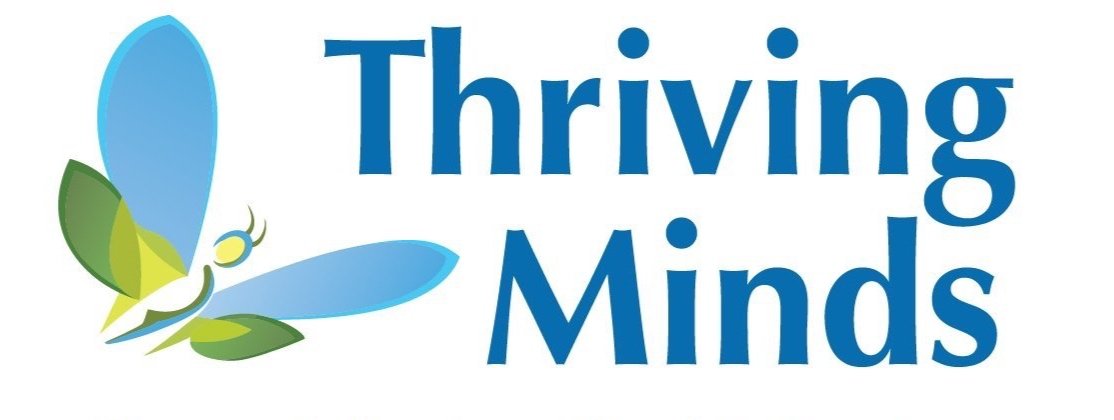That’s So OCD: Understanding the Line Between Typical Behavior and OCD
This month, we’re exploring obsessive-compulsive disorder (OCD) in children and adolescents—what it is, what it isn’t, and how to recognize when everyday behaviors might signal need for further evaluation.
What Exactly is OCD?
Obsessive-compulsive disorder (OCD) is a psychological disorder where individuals experience recurring, unwanted thoughts (obsessions) and engage in repetitive behaviors (compulsions) to alleviate the anxiety these thoughts cause. These compulsions go beyond typical habits; the key difference between OCD and typical childhood behaviors is the extent to which thoughts and behaviors disrupt daily life.
Typical Childhood Behaviors vs. Signs of OCD
It’s normal for children to exhibit some repetitive behaviors or to be particular about routines. For example:
Typical: A child always prefers the same bedtime story or insists on a specific color cup.
OCD Symptom: A child experiences extreme anxiety if they can’t follow specific rituals, such as hearing the same bedtime story in the same way or counting items repeatedly.
Typical: Organizing toys, arranging items in a way that looks nice, putting things away to keep a tidy space.
OCD Symptom: Needing items to be in a specific order or alignment, with significant distress if things are out of place; feeling the need to rearrange multiple times until it feels “just right,” often beyond neatness or visual preference.
Typical: Having occasional scary or weird thoughts, such as thinking or asking about “what if” scenarios (e.g., “What if I fall off my bike?”).
OCD Symptom: Recurring, disturbing and/or disturbing thoughts that cause distress; trying to “cancel out” the thought with specific actions or phrases, and feeling ashamed or frightened by these thoughts, or feeling the need to seek frequent reassurance from caregivers, such as continually asking about ‘what if’ scenarios, what is going to happen next, etc.”
Common obsessions in children with OCD might include intense worries about cleanliness, harming oneself or others, failing to meet moral or religious standards, intrusive sexual images, or the like. Compulsions often involve washing, checking, counting, or seeking constant reassurance. If these behaviors interfere with school, friendships, or family routines, it may be worth considering a professional evaluation.
Breaking Down Common Myths
“OCD is just about being clean and organized.”
OCD can involve cleanliness rituals, but it is not simply an obsession with cleanliness. These obsessions and compulsions often result in disruption to family life, and many children experience obsessions unrelated to cleanliness, such as fears of bad things happening or distressing, intrusive thoughts
“It’s just a phase.”
While some children may show OCD-like behaviors during certain developmental stages, OCD itself doesn’t typically go away on its own. Early intervention can help reduce symptoms and teach effective skills and strategies.
“OCD means they want to act this way.”
OCD can feel like it’s beyond a child’s control. Children are often aware that their behaviors and thoughts don’t make sense, but they feel compelled to perform certain actions to reduce anxiety.
How Can Parents Support Children?
Supporting a child who may have OCD starts with understanding, empathy, and seeking professional help if needed. Here are a few steps:
Avoid Reassurance Traps: Constant reassurance about fears (e.g., continually telling your child where you are going or what you will be doing next) and accommodations (e.g., checking that all doors are locked if they ask you to) often reinforce the compulsive cycle. Instead, gently encourage resilience.
Model Calm Behavior: Children often look to parents for cues. Remaining calm and collected, even when a child feels distressed, can help them build coping skills.
Promote Positive Routines: Introducing balanced routines, rather than rigid ones, can help reduce stress and provide structure.
Consider Professional Guidance: A psychologist can evaluate symptoms and offer evidence-based treatment options like Exposure and Response Prevention (ERP) which has shown success in helping children with OCD.
When to Seek Help
If you notice that compulsions or obsessive thoughts are causing distress or interfering with your child’s quality of life, consider consulting a child psychologist. Early intervention can help prevent the escalation of symptoms and provide your child with tools to manage their anxiety effectively.
Final Thoughts: Breaking the Stigma Around OCD
Let’s foster a deeper understanding of OCD beyond the misconceptions. By recognizing the signs and providing compassionate support, we can create a space where children feel safe to express their needs. Early identification and intervention are key to helping children navigate OCD with resilience and confidence.
Thank you for reading! If you have questions or would like to discuss any concerns about your child’s behavior, please reach out. We’re here to support every step of your family’s journey.

